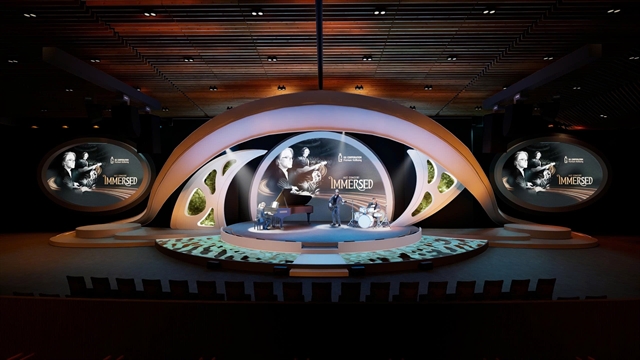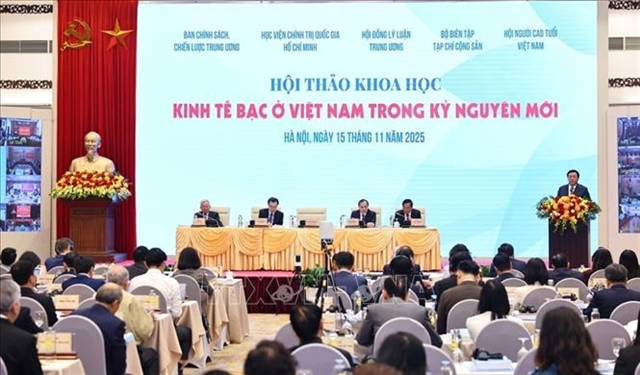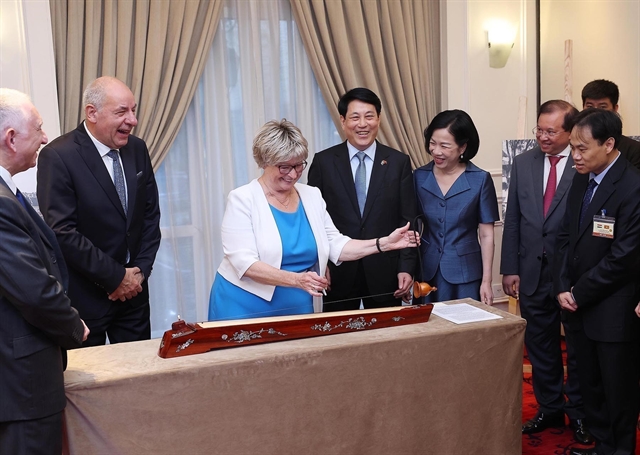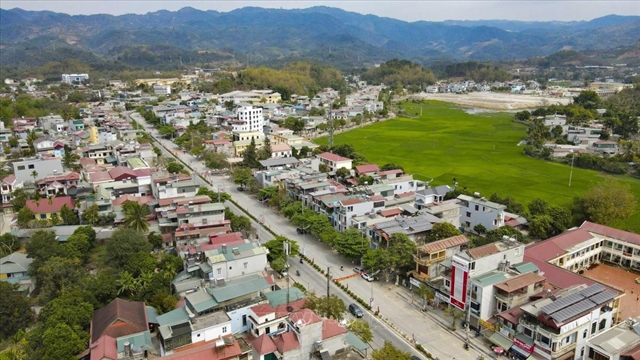 Life & Style
Life & Style


|
| Vietnamese State President Lương Cường and Hungarian President Sulyok Tamas opens the exhibition of works by Hungarian doctor and photographer Bozoky Dezso on May 28.— VNA/VBS Photo Lâm Khánh |
HÀ NỘI — Vietnamese State President Lương Cường and his spouse, along with visiting Hungarian President Sulyok Tamas and his spouse, attended the opening of a photo exhibition in Hà Nội on Wednesday, which showcases works by Hungarian doctor and photographer Bozoky Dezso.
The exhibition is a special cultural event, not only marking President Tamas’s official visit to Việt Nam but also celebrating the longstanding friendship and enduring cooperation between Việt Nam and Hungary, which were built and have been nurtured over the past 75 years.
Bozoky Dezso (1871–1957) served as a naval doctor in the Austro-Hungarian Navy. Between 1907 and 1909, he embarked on a 16-month journey across East Asia aboard the Austro-Hungarian warship Franz Joseph I.
Departing from the port of Pula in Croatia, the voyage took him through the Suez Canal and Red Sea to Ceylon (now Sri Lanka), and on to major ports in China, the Republic of Korea, and Japan. On his return home, Dezso visited Việt Nam, when his ship docked on the Saigon River, giving him a chance to explore Saigon, the most important city in the region at that time, which is now HCM City.
The exhibition presents digital reproductions of Dezso’s original photos, preserved by the Museum of Fine Arts Budapest – Ferenc Hopp Museum of Asiatic Arts. These rare images capture notable landmarks and areas of Saigon that remain today, such as Catinat Street (now Đồng Khởi Street), the Botanical Gardens, the Saigon Opera House (opened in 1900, now the HCM City Opera House), the majestic City Hall (now the HCM City People’s Committee Headquarters), the Bến Nghé Canal, and Buddhist temples in Chợ Lớn.
Offering a historical perspective, the photos serve as a rare window into the architecture, customs, and daily life of Việt Nam more than a century ago – and are now being publicly displayed for the first time.
Speaking at the ceremony, President Tamas emphasised that the exhibition testifies to how the Hungarian and Vietnamese people came to know each other long before the establishment of official diplomatic ties. Early in the 20th century, many Hungarians became familiar with Việt Nam and its people through Dezso’s photos.

|
| Hungarian President Sulyok Tamas's spouse experiences đàn bầu (one-string zither) a Vietnamese traditional musical instrument. — VNA/VNS Photo Lâm Khánh |
The Hungarian leader noted that Dezso had been deeply impressed by Việt Nam, capturing images and showing his experiences in a diary so that future generations and Hungarian audiences in particular could gain insights into a distant and captivating culture.
He described the exhibition as a rare opportunity for the people of both nations to glimpse a moment in history, preserved at a time when photographic records were scarce. These images, he said, offer spiritual and historical values that transcend time.
President Tamas, having had the opportunity to witness firsthand the beauty of Việt Nam during this visit, remarked that it was no coincidence the country had captivated the hearts of Hungarians who had the chance to visit in the early 20th century.
He expressed his belief that the friendship between the governments and people of the two countries will continue to thrive, enabling both sides to gain deeper understanding of each other’s cultures and values, thereby strengthening and expanding bilateral cooperation.
For his part, President Cường affirmed that the photos on display are a priceless cultural legacy.
On behalf of the Party, State, and people of Việt Nam, he expressed gratitude to the Government and people of Hungary, and Dezso's family for preserving and sharing this collection – a reflection of Hungary’s sentiments toward Việt Nam.
He highlighted the symbolic significance of the exhibition, held on the occasion of the 75th anniversary of Việt Nam – Hungary diplomatic ties and coinciding with President Tamas’s official visit. He noted that it offers younger generations in Việt Nam a meaningful glimpse into life and society in the early 20th century.
With his sincerity, President Cường presented the Hungarian First Lady with a đàn bầu, a traditional Vietnamese monochord musical instrument. Though modest in material value, he said, the gift symbolises the ingenuity and cultural richness of the Vietnamese people. With only one string, đàn bầu can still convey a full range of musical tones and emotions.
The Hungarian First Lady expressed her appreciation and thanked the Vietnamese leader for his meaningful gift. — VNA/VNS




